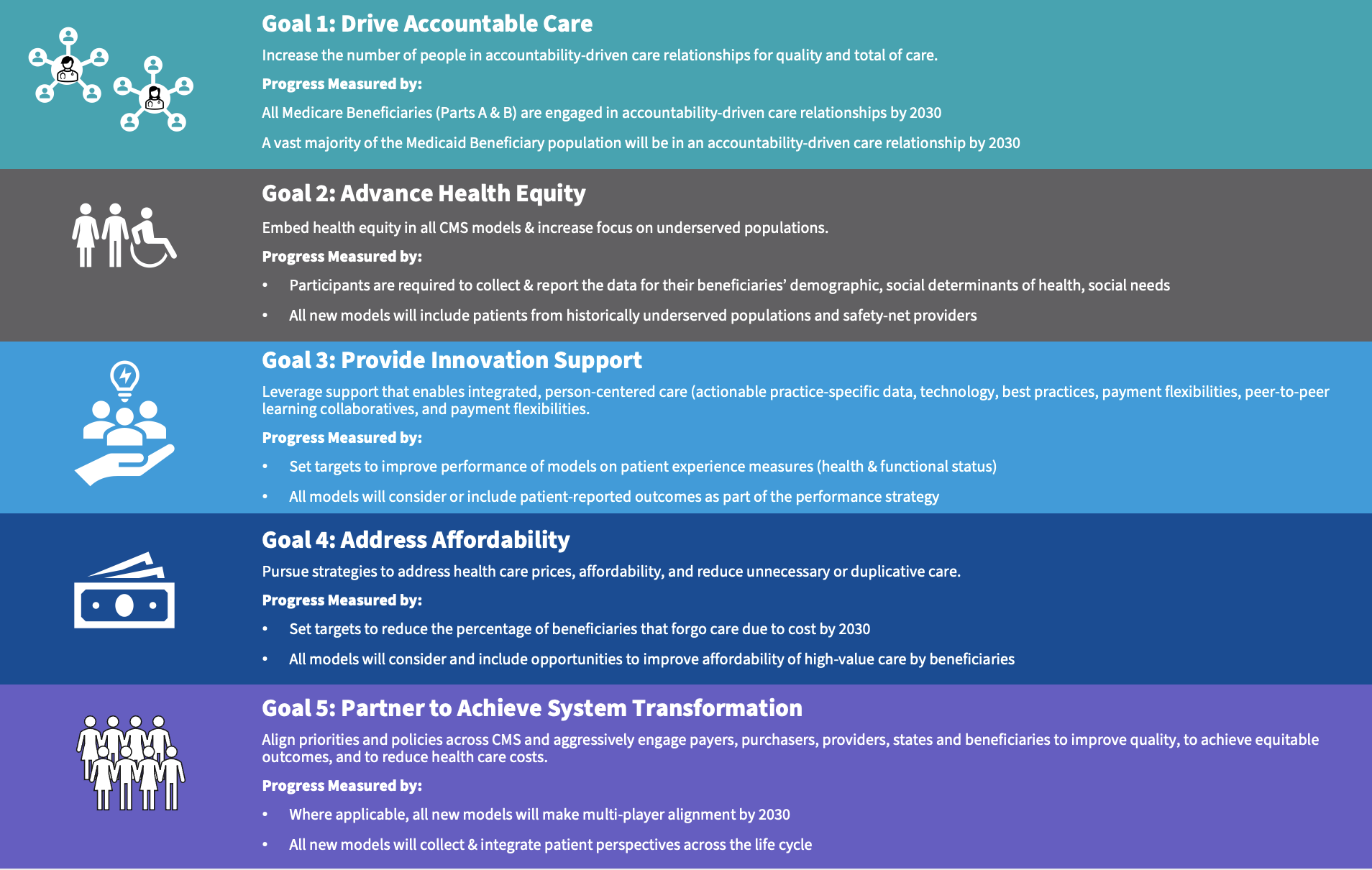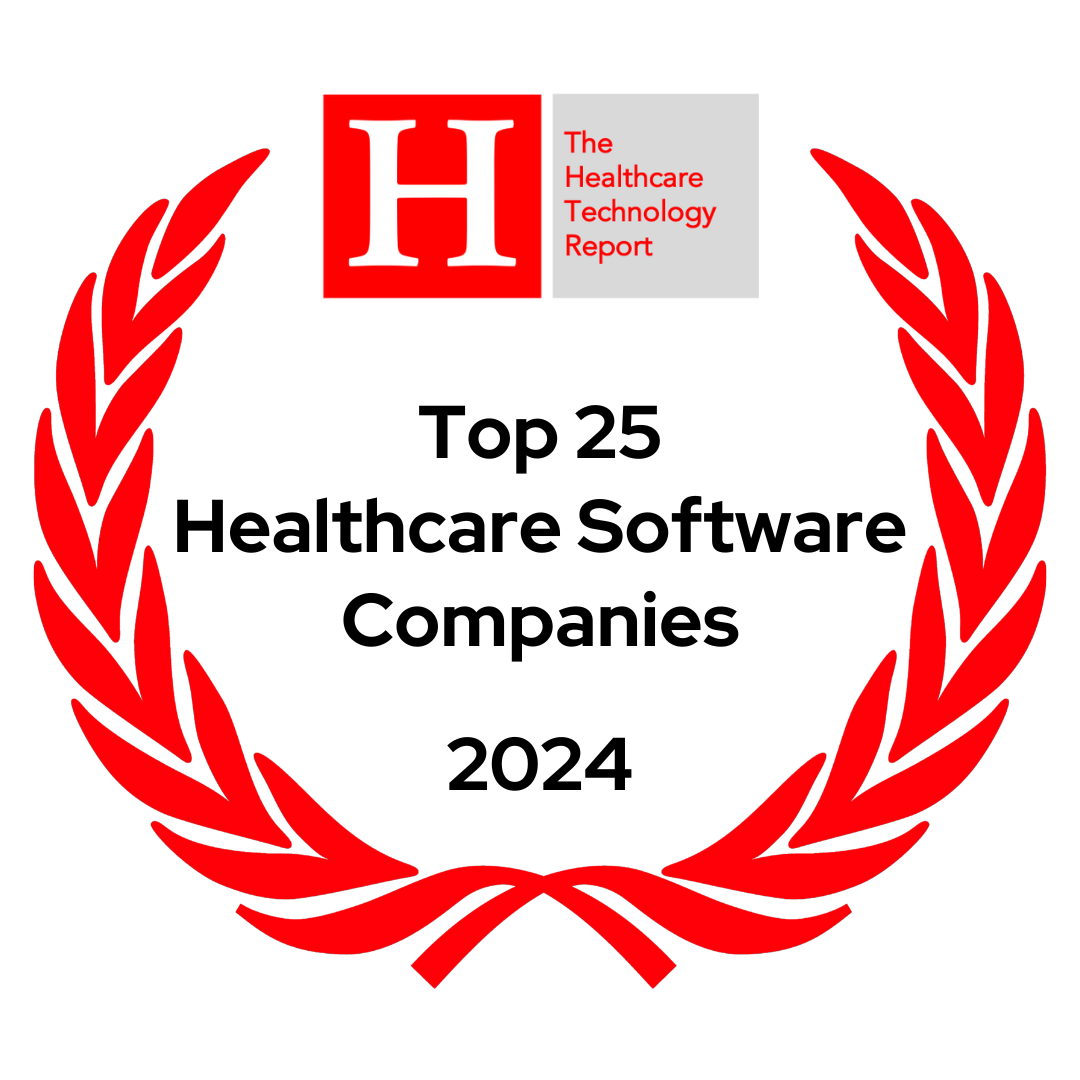John Fryer, SVP and Head of Market and Rick Goddard, Sr. Director, Market Strategy
Last week the Center for Medicare and Medicaid Innovation (CMMI) introduced their strategic refresh “Putting All Patients at the Center of Care” to support broader, more equitable, and outcome-based healthcare delivery transformation while streamlining current and future payment models.
Since its inception in 2010 as a part of the Affordable Care Act, CMS has launched over 50 innovation/pilot models all with the intent to transition care delivery providers toward value-based care. To date, only 6 of 50 models yielded statistically significant savings for Medicare and taxpayers. Further, of the six, only four met the requirements defined by CMMI for an extension in duration and scope given the new administration’s desire to create more cohesive models to alleviate the confusion and complexity caused by the number of models previously.
Charting a Path Forward
Taking a page from previous lessons learned, CMS’ refreshed approach hopes to provide value-driven model adoptees a more comprehensive structure to help address previous programmatic gaps. These focused efforts include:
- Broadening participation within provider practices to include a more comprehensive beneficiary population (i.e., focus beyond Medicare), with continued emphasis on the primary care provider’s role in driving aggregate enhancements to coordination and management of care ultimately driving broader economic savings
- Doubling down on focused bundled payment models to expand upon prior program success to drive improved quality and lower costs of episodic care. As noted by CMS this will require programs to find new ways to engage with the whole care team and broader groups of specialty physicians. While CMS’ refreshed strategy certainly puts primary care front and center in the provision of value-based care, they made a point to highlight their desire to engage an increasing number of specialties in future programs.
- Redesigning benchmark and risk adjustment methodologies to provide incentives that encourage participation, increase engagement with beneficiaries, and remove perverse incentives from bad actors to “game” the system.
Five Strategic Objectives for Current and Future Models

While equity must be a central focus of all initiatives, CMMI is looking to actively partner with providers to expand beneficiaries of Medicare and Medicaid to accountability-driven relationships by 2030. And they can’t do it alone. The strategic refresh outlined several areas for “how” they intend to support providers and beneficiaries to get to that admirable and important goal.
- Driving accountable care: CMS seeks to “educate and engage beneficiaries on what an accountable care relationship is and the potential value/benefits [they could derive from them]”. That is a very important investment CMS has committed to, given Medicare is a political firestorm and can be easily be confused with situations where “you’re taking away my access to see my doctor.” An investment to educating beneficiaries, consumer groups, and the broader healthcare community is critically important to remove inaccuracies and barriers that allow value-based care to thrive.
- Advancing Health Equity: Unfortunately, payment model innovation in the past decade failed to accurately reflect the spectrum of diversity in the Medicare and Medicaid populations. To address this, CMS has stated they will embed a health equity emphasis into every current and future model. New models will be designed from the ground up to encourage the inclusion of patients from historically underserved populations as well as with provider organizations who serve as safety-net providers including rural clinics and community health centers.
- Provide Innovation Support: CMMI offered an example next step of “developing and test models or care delivery innovations across models that address gaps in care, such as behavioral health, SDoH, and palliative care.” While not entirely specific, the investment by CMMI to invest in models that improve the penetration of investment in behavioral health, social determinants of health solutions, and end-of-life care is critical to support focus on many “root cause” issues to advanced development of chronic issues and downstream unnecessary costs to Medicare.
- Addressing affordability: CMMI offered to “identify areas where Innovation Center models can test efforts to reduce program expenditures, which may also lower out-of-pocket costs for beneficiaries.” They outlined the example in risk-bearing models where they offer waivers to cost-sharing to promote accessible visits to the doctor’s office. In CMMI’s Global Professional Direct Contracting model, direct contracting entities can choose to cover the cost of the 20% Part B coinsurance for certain services for beneficiaries that can result in improved downstream access, affordability, and support better compliance with care plans.
- Partner to achieve health system transformation: CMMI posed an example next step to “make model data more easily available to stakeholders to advance transparency on model performance and to support external research and learnings.” The focus of the last century in advancing healthcare has been led by data’s influence in critical decision making and best practices. CMMI’s commitment to unlock the black box of information necessary to drive care coordination in future models will be key to programmatic success and beneficiary high quality outcomes.
Future of Value-Based Care: Still Missing Significant Detail, But the Foundation is Taking Shape
While the refreshed strategic direction released this week starts to uncover where the administration is planning to focus health efforts over the next several years, the provider market at-large is still waiting for the programmatic changes to materially unfold. What is clear, however, is that Medicare providers must be laser-focused on addressing social inequities and the role this plays in advancing the delivery and financing of healthcare in the United States. CMMI and CMS are intending to dedicate resources, data, and waivers to ensure these goals are met and exceeded. While regulatory change is viewed as a burden by constituents, the innovators look at this change as an opportunity. Providers need to take a proactive stance and lean in on positioning their organization for success under the new CMMI direction. This will benefit your healthcare organization as it navigates the continuously evolving healthcare landscape.
With this refocused strategy, CMS has directly outlined its intent on mitigating health disparities while significantly enhancing and accelerating value-based payment models. More details are required but the expectations are growing for programs and structure to support these stated goals. With the strategic foundation now in place, the time is now for the roll out of the plan. The year 2030 is not too far away and aligning the complex healthcare environment is no simple task as observed by the last decade of CMMI. The healthcare community is ready to engage in the future of value-based care and will need CMS and CMMIs’ partnership to succeed.

